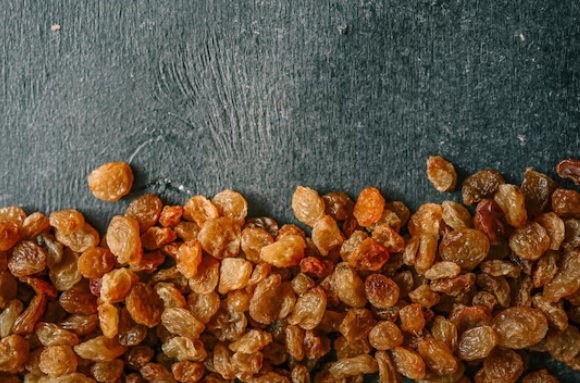How Pre-Drying Grape Acidity Affects the Final Color of Sultana Light Raisins
The Invisible Factor Behind a Golden Hue
Why do some sultana light raisins develop a golden, attractive color, while others appear darker and less uniform? The answer often lies in a detail overlooked by many producers—the acidity of the grape before drying. Acidity plays a subtle yet significant role in determining the final color of sultanas, impacting both quality and marketability.
This article explores how pre-drying grape acidity influences the color of light raisins, combining scientific insight with practical advice for exporters and producers looking to deliver top-grade product.
To check the price and product details of Sultana light Raisin, please visit the pink link.
Understanding Grape Acidity and Its Measurement
Before drying, grapes naturally contain organic acids such as tartaric and malic acid. These contribute to titratable acidity (TA) and pH levels, both of which influence chemical reactions during the drying process.
pH levels typically range between 3.2 and 4.0 for fresh sultana grapes.
Titratable acidity refers to the total acid concentration, often expressed as grams of tartaric acid per liter.
The key is that lower acidity (higher pH) tends to accelerate browning, while moderate acidity levels help preserve the lighter golden hue favored in premium sultana varieties.
How Acidity Influences Browning Reactions
During drying, grapes undergo both enzymatic and non-enzymatic browning. These reactions are responsible for color development.
- At higher pH, polyphenol oxidase activity increases, enhancing enzymatic browning.
- At lower pH, enzymes become less active, and the formation of melanin pigments slows.
Acidity also affects the Maillard reaction, where sugars and amino acids interact, contributing to darkening if not controlled.
In short, optimal acidity reduces undesirable browning, leading to a consistent golden color.
Adjusting Acidity Before Drying
Producers can control pre-drying acidity through vineyard and processing interventions. Here’s how:
1. Manage Vineyard Inputs
Use balanced fertilization, especially nitrogen and potassium, to regulate acid levels.
Monitor irrigation to prevent over-ripening, which raises pH.
2. Select the Right Harvest Time
Grapes harvested too late tend to have lower acidity.
Aim for a balance between sugar and acid to preserve both taste and color.
3. Apply Acidic Pre-Treatments
Acidic dips (such as citric acid solutions) before drying can help buffer pH.
These treatments are often used alongside ethyl oleate or potassium carbonate to control texture and drying speed.
READ MORE: Production Stages of Sultana Light Raisins: From Vineyard to Export
Why This Matters for Exporters and Processors
Color is one of the most visible quality markers in sultana raisins. Lighter hues fetch higher prices and meet strict export standards in markets like Europe and the Middle East. By controlling acidity before drying, exporters can ensure:
- Higher visual grade classification
- Better product uniformity
- Improved shelf appeal and acceptance in global markets
Frequently Asked Questions
1. What is the ideal pH range for sultana grapes before drying?
Target a pH range between 3.4 and 3.8 for optimal color preservation.
2. Can pre-drying acidity be adjusted chemically?
Yes, using acid dips or modifying fertilization practices in the vineyard can influence acidity.
3. Does higher acidity always result in better color?
Not always. Extremely low pH can affect taste and texture. Balance is key.
4. What other factors influence raisin color?
Drying speed, temperature, air exposure, and pretreatment solutions all play roles.
5. How can I measure acidity in grapes?
Use a pH meter for direct pH reading and perform titration for titratable acidity.

